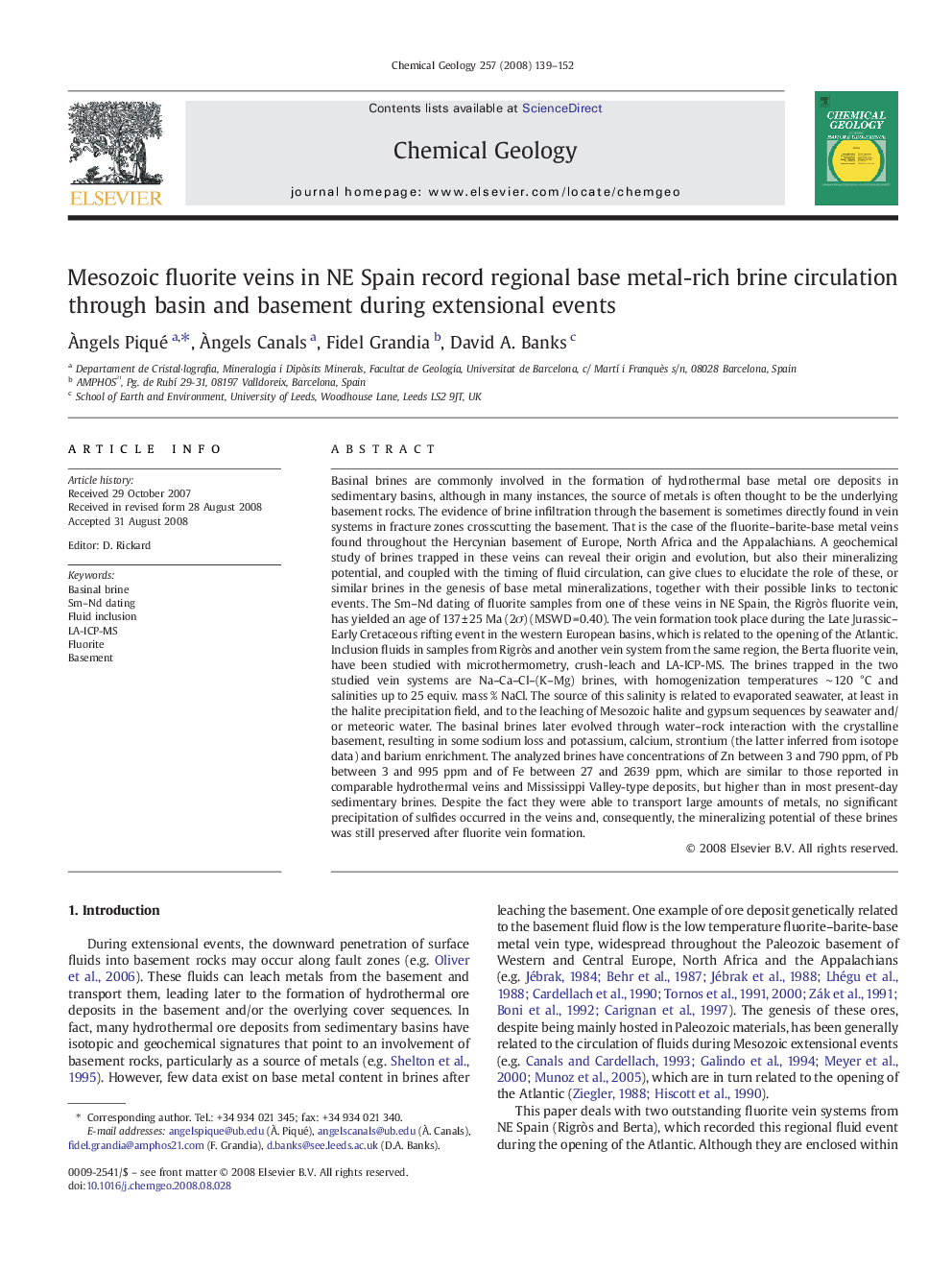| کد مقاله | کد نشریه | سال انتشار | مقاله انگلیسی | نسخه تمام متن |
|---|---|---|---|---|
| 4700535 | 1637718 | 2008 | 14 صفحه PDF | دانلود رایگان |

Basinal brines are commonly involved in the formation of hydrothermal base metal ore deposits in sedimentary basins, although in many instances, the source of metals is often thought to be the underlying basement rocks. The evidence of brine infiltration through the basement is sometimes directly found in vein systems in fracture zones crosscutting the basement. That is the case of the fluorite–barite-base metal veins found throughout the Hercynian basement of Europe, North Africa and the Appalachians. A geochemical study of brines trapped in these veins can reveal their origin and evolution, but also their mineralizing potential, and coupled with the timing of fluid circulation, can give clues to elucidate the role of these, or similar brines in the genesis of base metal mineralizations, together with their possible links to tectonic events. The Sm–Nd dating of fluorite samples from one of these veins in NE Spain, the Rigròs fluorite vein, has yielded an age of 137 ± 25 Ma (2σ) (MSWD = 0.40). The vein formation took place during the Late Jurassic–Early Cretaceous rifting event in the western European basins, which is related to the opening of the Atlantic. Inclusion fluids in samples from Rigròs and another vein system from the same region, the Berta fluorite vein, have been studied with microthermometry, crush-leach and LA-ICP-MS. The brines trapped in the two studied vein systems are Na–Ca–Cl–(K–Mg) brines, with homogenization temperatures ∼ 120 °C and salinities up to 25 equiv. mass % NaCl. The source of this salinity is related to evaporated seawater, at least in the halite precipitation field, and to the leaching of Mesozoic halite and gypsum sequences by seawater and/or meteoric water. The basinal brines later evolved through water–rock interaction with the crystalline basement, resulting in some sodium loss and potassium, calcium, strontium (the latter inferred from isotope data) and barium enrichment. The analyzed brines have concentrations of Zn between 3 and 790 ppm, of Pb between 3 and 995 ppm and of Fe between 27 and 2639 ppm, which are similar to those reported in comparable hydrothermal veins and Mississippi Valley-type deposits, but higher than in most present-day sedimentary brines. Despite the fact they were able to transport large amounts of metals, no significant precipitation of sulfides occurred in the veins and, consequently, the mineralizing potential of these brines was still preserved after fluorite vein formation.
Journal: Chemical Geology - Volume 257, Issues 1–2, 30 November 2008, Pages 139–152